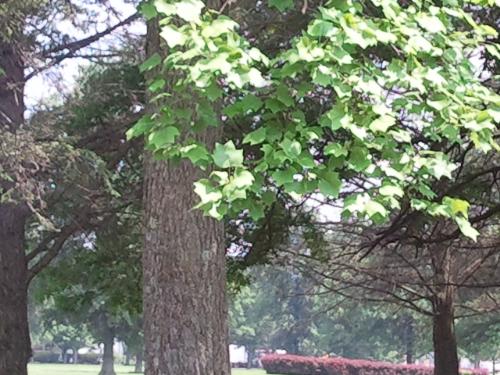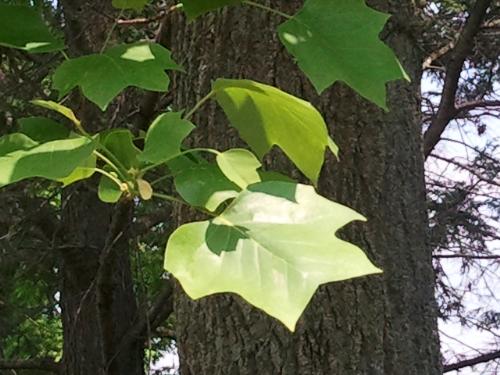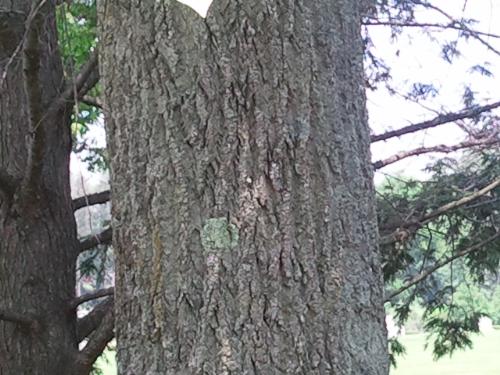|
|
|
|
|
|
|
|
|
|
|
|
|
 |
 |
 |
 |
|
 |
 |
 |
 |
|
|

The Yellow Poplar, also called Tulip Poplar or Tulip Tree, is named for the tulip-like flowers. The scientific name is liriodendron tulipfera. It is easily identified by the lyre or cat head shaped leaves.

The famous Swedish scientist Linneaus, known for establishing the scientific naming system we use today, had one of these North American natives in his yard in Sweden by 1687. The trees were a staple of early American trade as early as 1663 in London.
The tree is grows upward of 100' and tends to have few branches near the ground; hence its value as a hardwood for furniture, implements, shingles, and pulp. Traditionally, the yellow poplar has also been used to make dugout canoes and was widely used by early settlers to build log homes, because of the long straight sections of trunk without branches (knots in the finished wood).
The yellow poplar is the state tree of Tennessee, Kentucky, and Indiana.
 Here's what the bark looks like... Here's what the bark looks like...
...so you can identify the tree without leaves.
Back to top
Section last updated/reviewed 1 Jun 11.
Please note that the images and logos here, as on all our pages, are
© (copyright) their respective owners and used by gracious permission. See our Special Thanks! page for details and links.
|
|
 |
 |
|
 |
 |
 |
 |
|
|
|
|
|
|
|
|
|